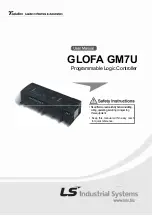
EMIF_CLK
EMIF_nCS[0]
EMIF_BA
EMIF_A
EMIF_D
EMIF_nRAS
EMIF_nCAS
EMIF_nWE
Bank
Row
Column
D1
D2
D3
D4
ACTV
WRT
EMIF_nDQM
D5
D6
D7
D8
EMIF Module Architecture
808
SPNU563A – March 2018
Copyright © 2018, Texas Instruments Incorporated
External Memory Interface (EMIF)
21.2.5.10 SDRAM Write Operations
When the EMIF receives a write request to SDRAM from one of the requesters listed in
, it
performs one or more write-access cycles. A write-access cycle begins with the issuing of the ACTV
command to select the desired bank and row of the SDRAM device. After the row has been opened, the
EMIF proceeds to issue a WRT command while specifying the desired bank and column address.
EMIF_A[10] is held low during the WRT command to avoid auto-precharging. The WRT command signals
the SDRAM device to start writing a burst of data to the specified address while the EMIF issues NOP
commands. The associated write data will be placed on the data bus in the cycle concurrent with the WRT
command and with subsequent burst continuation NOP commands.
shows the signal waveforms for a basic SDRAM write operation in which a burst of data is
read from a single page. When the EMIF SDRAM interface is configured to 16-bit by setting the NM bit of
the SDRAM configuration register (SDCR) to 1, a burst size of eight is used.
shows a burst
size of eight.
Figure 21-6. Timing Waveform for Basic SDRAM Write Operation
The EMIF will truncate a series of bursting data if the remaining addresses of the burst are not part of the
write request. The EMIF can truncate the burst in three ways:
•
By issuing another WRT to the same page
•
By issuing a PRE command in order to prepare for accessing a different page of the same bank
•
By issuing a BT command in order to prepare for accessing a page in a different bank
Several other pins are also active during a write access. The EMIF_nDQM[1:0] pins are driven to select
which bytes of the data word will be written to the SDRAM device. They are also used to mask out entire
undesired data words during a burst access. The state of the other EMIF pins during each command can
be found in
.
The EMIF schedules its commands based on the timing information that is provided to it in the SDRAM
timing register (SDTIMR). The values for the timing parameters in this register should be chosen to satisfy
the timing requirements listed in the SDRAM datasheet. The EMIF uses this timing information to avoid
violating any timing constraints related to issuing commands. This is commonly accomplished by inserting
NOP commands during various cycles of an access. Refer to the register description of SDTIMR in
for more details on the various timing parameters.
















































